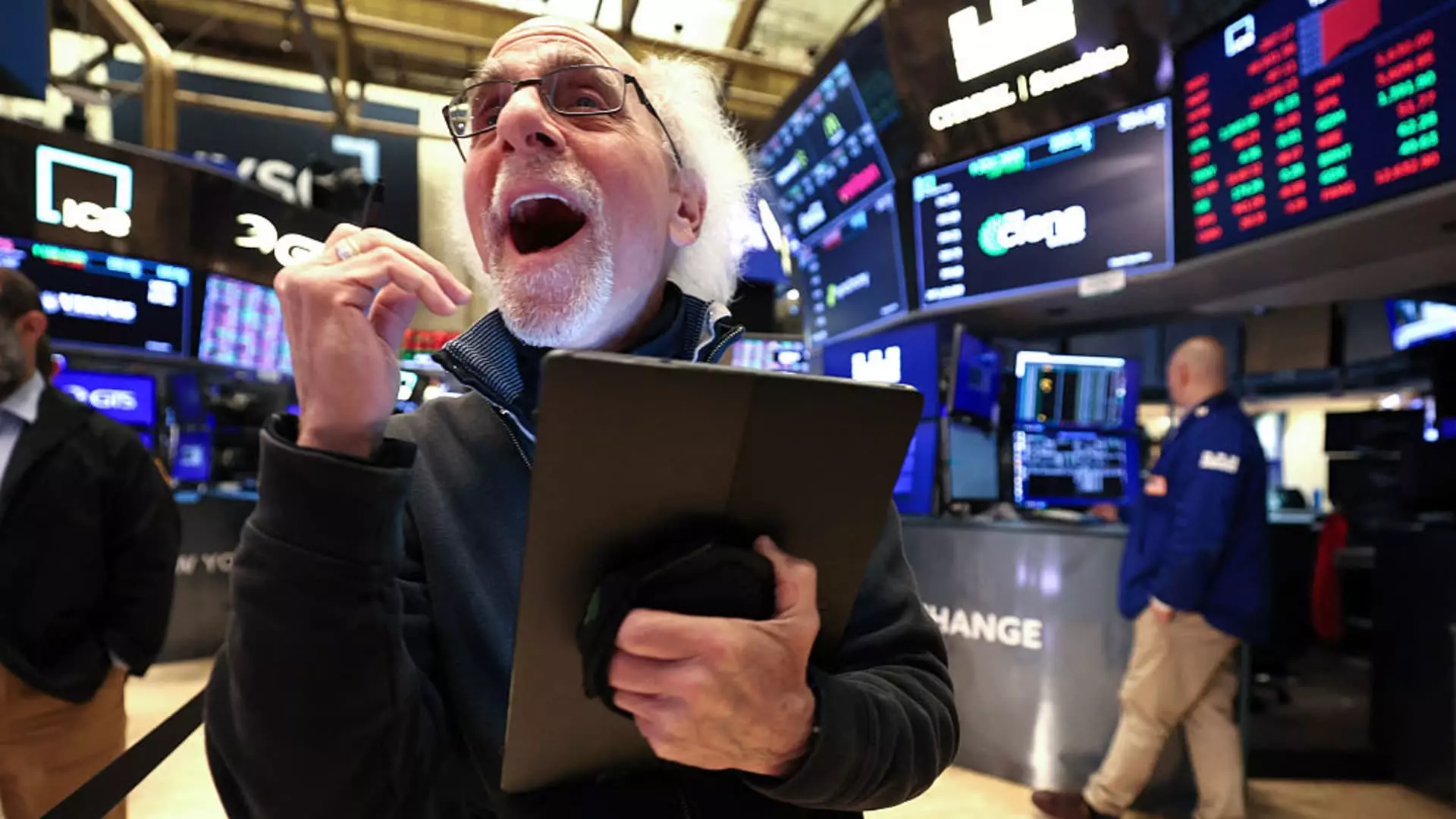The recent surge in the stock market, particularly the S&P 500 and the Nasdaq, appears to be a classic case of temporary optimism masking underlying vulnerabilities. While investors celebrate record highs and strong earnings reports, this euphoria can be dangerously misleading. Market movements driven by a handful of tech giants and inflated expectations create an illusion of resilience, but beneath the surface, fundamental weaknesses threaten to undermine this fragile rally. The enthusiasm surrounding technology stocks like Meta Platforms and Amazon demonstrates a herd mentality rooted more in aspiration than in actual economic strength. It’s vital to recognize that this form of investor optimism often results from a short-term fixation on quantitative metrics rather than a comprehensive understanding of broader economic realities.
Overconfidence in Earnings: A Risky Assumption
The narrative surrounding the current earnings season is notably optimistic, with over 85% of companies beating expectations. Yet, this data can be deceptive if taken at face value. The fact that earnings are tracking only 5% year-over-year growth signals a modest improvement at best. Relying on these numbers to justify sustained market growth risks overlooking deeper issues such as inflationary pressures, wage stagnation, or global economic headwinds. The focus on megacaps like Alphabet and Tesla, which are projected to outperform, creates a skewed perception that the entire market is thriving. These corporations represent a small segment—an outlier, rather than the rule—and their success may not be enough to propel a broader recovery. The assumption that they will carry the market to new heights is precarious, especially if macroeconomic challenges intensify.
Political Underpinnings and False Security
Amidst the euphoria, political maneuvers and policy uncertainties loom large, often ignored by optimistic investors. The White House’s reaffirmation of tariffs introduces a significant source of volatility that could undermine market confidence. While some commentators dismiss tariffs as a non-factor after a certain date, history demonstrates that trade policies can shift swiftly and unpredictably, disrupting confidence and economic stability. Calling August 1 the “hard deadline” for tariffs is akin to waving a red flag in front of a bull—false assurance that future negotiations will be smooth is naive at best. This disconnect between political rhetoric and market realities fosters a false sense of security, and when reality strikes, investors may find themselves unprepared for sudden downturns.
The Fallacy of Short-Term Recovery and False Positives
Market analysts like Sam Stovall suggest that following a correction, markets tend to rally approximately 10%, implying that the current uptrend might continue. However, this reasoning assumes a linear path to recovery, neglecting that markets are often driven by sentiment rather than fundamentals. The idea that negative sentiment has been “shaken out,” and that consumer confidence is improving is overly simplistic. These are often temporary or superficial indicators, and without structural improvements in economic fundamentals, they may serve as little more than wishful thinking. Relying on such projections can lull investors into complacency, setting the stage for sharper declines when the underlying issues resurface. History teaches that markets rarely move in straight lines, and overconfidence in a smooth recovery overlooks the potential for shocks—be they geopolitical, monetary, or economic.
The Price of Uncritical Optimism
By choosing to interpret the market’s recent gains as proof of a robust economy, investors risk ignoring the warning signs of an eventual correction. The recent rally, fed by a handful of tech giants and an overly optimistic earnings outlook, is reminiscent of a house built on shifting sands. It is only a matter of time before this illusion shatters, exposing the fragility of a market that continues to climb despite mounting risks. A realistic assessment would demand more skepticism and caution, acknowledging that the current optimism may be less indicative of sustainable growth than of a temporary bounce fueled by inflated expectations. A balanced approach, recognizing both the potential for growth and the lurking threats, is crucial to avoiding the devastating consequences of a market that is roped together by short-sighted optimism rather than genuine economic strength.


Leave a Reply